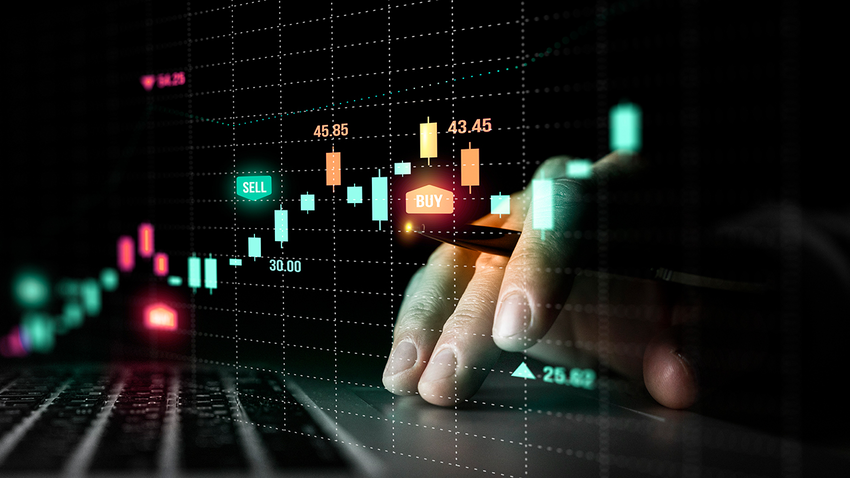
Algorithmic trading, as you may know, is the method of executing trades in the capital markets using algorithms and computer software. You can think of it as an evolved form of technical trading. Instead of manually scanning charts and pressing buttons to place orders, an algorithm does that for you. Therefore, algorithmic traders also refer to technical indicators while constructing their trading strategy. They write and design algorithms around technical indicators. There are multiple technical indicators that algorithmic traders use to analyse charts and place trades. This article will cover the indicator called the time-weighted average price, commonly abbreviated as TWAP.
Table of Contents
What Is a Time-Weighted Average Price Order?
Time-weighted average price, or TWAP, is one of the popular algo-trading indicators based on the weighted average price. However, it differentiates itself from other weighted average price indicators by putting emphasis on the element of time. In practical terms, the TWAP helps algorithms execute large trade orders without drastically impacting the market. It does this by breaking up the larger order into smaller orders and executing them at the TWAP price. When a large order is executed in a single transaction by an institution such as a mutual fund or an insurance company, the asset’s price can rapidly rise or fall. So, the time-weighted average price helps maintain price stability in the market.
This indicator can be used in a variety of ways by traders to develop algo-trading strategies. One of the most common techniques adopted is to randomise the order size as well as the time interval between orders. In this case, the algorithm is programmed to restrict the quantity to a specified order size.
Example of a TWAP Order
Let us now look at an example to develop a better understanding of how the time-weighted average price is used. Suppose a financial institution decides to purchase 1,00,000 shares of a particular company. They can refer to the TWAP and program the algorithm to purchase 5,000 shares every 15 minutes for 5 hours. Similarly, instead of buying 5,000 shares in 5 hours, the trader could choose to buy 10,000 shares every 15 minutes over the course of 2.5 hours.
How is TWAP Calculated?
Compared to the other popular weighted price average indicator, the VWAP, calculating the TWAP is fairly simple. The indicator is calculated by averaging the entire day’s price bar or candlestick. For that, you consider the opening price, closing price, the day’s high, and the day’s low. Then, depending on the TWAP strategy that accounts for the time decided to execute the order, every day’s averaged price is considered to calculate the average price of the entire time period. That average price is called the TWAP.
Formula to calculate TWAP
If it had to be represented mathematically, the formula of the time-weighted average price would be as follows:
Average price of each day = (Open + Close + High + Low)/4
Assume the orders all the orders have to be placed within a span of a month. So, suppose putting all the trading days of the month together, the month has 20 trading days. Then the average weighted price of those 20 trading days is:
TWAP = (Average Price of Day 1 + Average Price of Day 2 + Average Price of Day 3 + …. + Average price of Day 20)/20
You can also calculate it using computer applications like Microsoft Excel, Google Spreadsheets, or Python.
Why Choose TWAP?
Going back to the example mentioned in the earlier sections, the indicator will help execute an order to purchase 1,00,000 shares in smaller parts. By spreading the order into smaller parts and buying 10,000 shares or 5,000 shares every 15 minutes, the order does not adversely impact the company’s share price.
The TWAP strategy is one of the most successful trading strategies among traders who engage in high-frequency trading. That is because the concept of HFT revolves around the idea of breaking a large order into several smaller orders. Likewise, it is also a popular trading strategy to execute other types of quantitative trading strategies.
TWAP signals do impact the volatility of the markets since the large order volume is broken into smaller orders and transacted at a single price.
TWAP vs. VWAP
Like the TWAP, the VWAP or volume-weighted average price is another weighted average price indicator. The main difference between the two is that the VWAP takes the traded volume and time into account while the TWAP takes only time into account. There, calculating the TWAP is a lot simpler than calculating the VWAP, as, in the latter’s case, you are also taking volume into the equation.
Conclusion
The bottom line is that the time-weighted average price is an indicator that is simple to calculate and interpret. It is one of the best solutions to execute high-frequency trades and convert large orders into multiple smaller ones. However, due to its simplicity, it may end up making your strategy predictable. So, it is essential that you have your contingency risk management plan in hand before executing any trades. Brokers like Share India are here to spread algo-trading technology to more people in India.